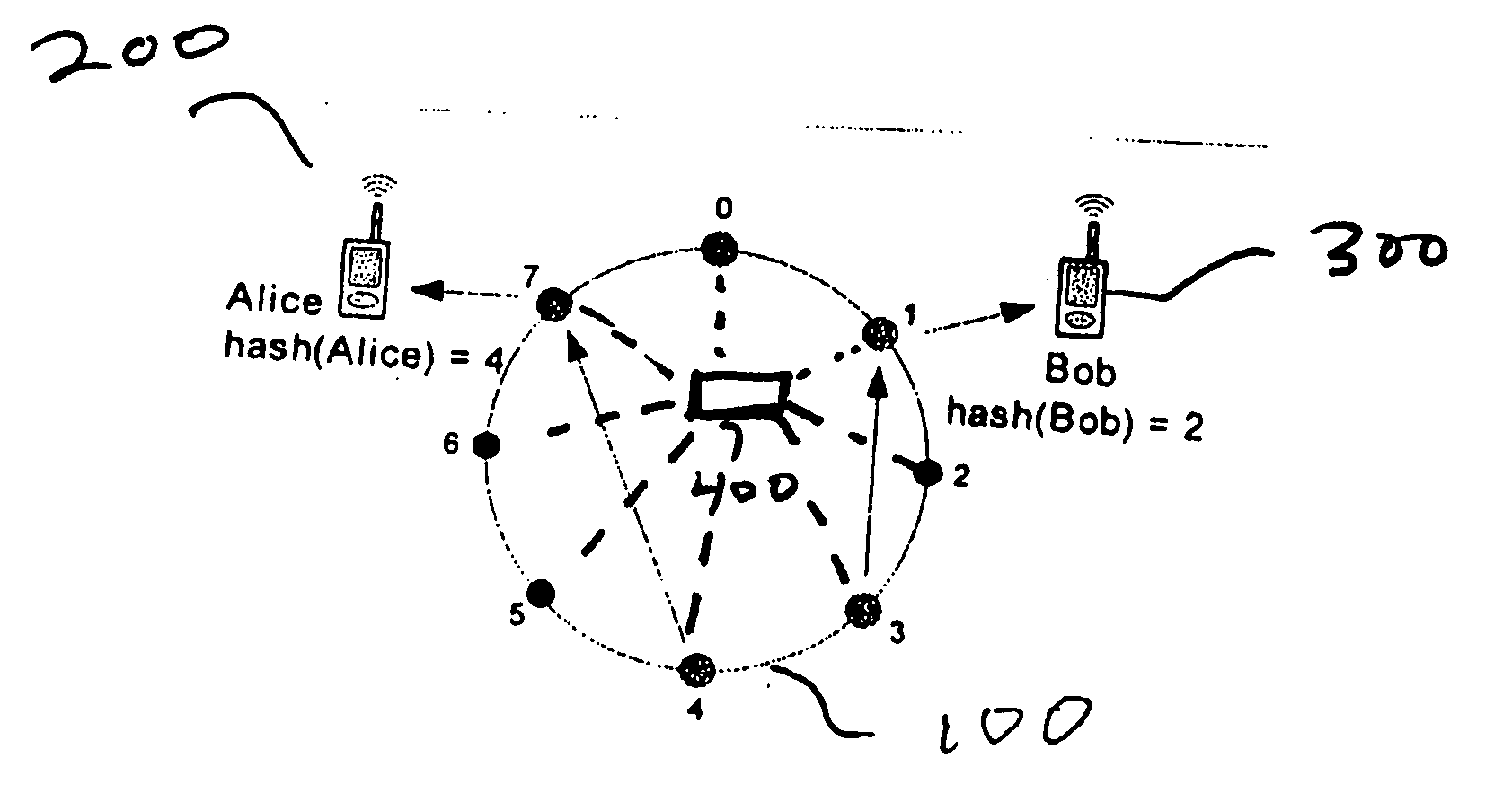Methods, devices and architectures for establishing peer-to-peer sessions
- Summary
- Abstract
- Description
- Claims
- Application Information
AI Technical Summary
Benefits of technology
Problems solved by technology
Method used
Image
Examples
Embodiment Construction
[0019]Referring now to FIG. 1 there is shown a peer-to-peer network 100 which includes one or more users, 200, 300, one or more host and / or anchor nodes labeled 0 through 7 and a provisioning device, such as a server, 400. Though referred to throughout this discussion as “users”, it should be understood that the users 200,300 may be devices, such as telephones, personal digital assistants, computers, gaming devices, multimedia devices and the like to name some examples of devices that are associated with an actual person(s). In accordance with the present invention, the provisioning server 400 is operable to assign each user a hashed key in addition to being assigned an address on the peer-to-peer network 100. To distinguish those hashed keys assigned to a user from those assigned to a node, we will refer to the former as key and the later as hashed key. The server 400 also assigns a hashed key to each of the nodes 0 through 7. To simplify the present explanation, the hashed keys of...
PUM
 Login to View More
Login to View More Abstract
Description
Claims
Application Information
 Login to View More
Login to View More - R&D
- Intellectual Property
- Life Sciences
- Materials
- Tech Scout
- Unparalleled Data Quality
- Higher Quality Content
- 60% Fewer Hallucinations
Browse by: Latest US Patents, China's latest patents, Technical Efficacy Thesaurus, Application Domain, Technology Topic, Popular Technical Reports.
© 2025 PatSnap. All rights reserved.Legal|Privacy policy|Modern Slavery Act Transparency Statement|Sitemap|About US| Contact US: help@patsnap.com


